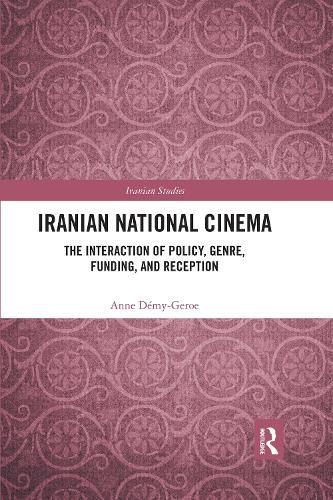Readings Newsletter
Become a Readings Member to make your shopping experience even easier.
Sign in or sign up for free!
You’re not far away from qualifying for FREE standard shipping within Australia
You’ve qualified for FREE standard shipping within Australia
The cart is loading…






This book examines transformations in the production and domestic and international reception of Iranian cinema between 2000 and 2013 through the intersection of the political markers - the presidential terms of Reformist president Mohammad Khatami and his successor, the conservative Mahmoud Ahmadinejad - and filmic markers, particularly Jafar Panahi’s The Circle (2000) and Asghar Farhadi’s About Elly (2009).
Through extensive field and media research, the book considers the interaction of a range of factors including government policy, Iranian national cinema genres and categories, intended audience, funding source, and domestic and international reception, to demonstrate the interplay between filmmakers and the government over these two successive presidencies. While the impact of politics on Iranian filmmaking has been widely examined, this work argues for a more nuanced understanding of politics in and of the Iranian cinema than has generally been previously acknowledged.
Drawing on both personal experience as a juror at the Fajr International Film festival and interviews with significant filmmakers, producers, actors and other industry insiders, including senior bureaucrats and politicians, the volume is a key resource for anyone interested in politics and Iranian cinema.
$9.00 standard shipping within Australia
FREE standard shipping within Australia for orders over $100.00
Express & International shipping calculated at checkout
This book examines transformations in the production and domestic and international reception of Iranian cinema between 2000 and 2013 through the intersection of the political markers - the presidential terms of Reformist president Mohammad Khatami and his successor, the conservative Mahmoud Ahmadinejad - and filmic markers, particularly Jafar Panahi’s The Circle (2000) and Asghar Farhadi’s About Elly (2009).
Through extensive field and media research, the book considers the interaction of a range of factors including government policy, Iranian national cinema genres and categories, intended audience, funding source, and domestic and international reception, to demonstrate the interplay between filmmakers and the government over these two successive presidencies. While the impact of politics on Iranian filmmaking has been widely examined, this work argues for a more nuanced understanding of politics in and of the Iranian cinema than has generally been previously acknowledged.
Drawing on both personal experience as a juror at the Fajr International Film festival and interviews with significant filmmakers, producers, actors and other industry insiders, including senior bureaucrats and politicians, the volume is a key resource for anyone interested in politics and Iranian cinema.